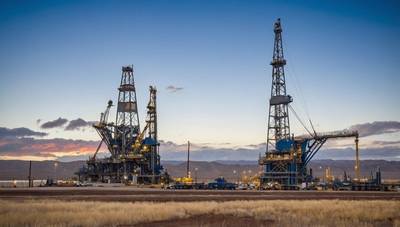Baker Hughes reports that US drillers have added oil and gas rigs to their fleet for the first time in 3 weeks.
Baker Hughes, a leading energy services company, said that the U.S. added oil and gas rigs this week for the first time since three weeks.
The number of oil and gas rigs, a good indicator of future production, increased by one in the week ending October 17.
Baker Hughes reported that despite this week's increase in rigs the total count is still 37 rigs or 6% lower than this time last year.
Baker Hughes reported that oil rigs remained at 418 rigs this week while gas rigs increased by one, to 121 rigs, the highest level since August.
Oil and gas rig counts are expected to decline by 5% and 20% respectively in 2024, as the lower U.S. gas and oil prices in recent years have prompted energy companies to concentrate more on increasing shareholder returns and reducing debt than increasing production.
Around 20 independent exploration companies and production firms tracked by U.S. financial service firm TD Cowen have said that they plan to reduce capital expenditures in 2025 by around 4% from the levels seen in 2024.
This compares to spending that is roughly flat in 2024. In 2023 and 2022, it increases by 27%, 40%, and 4%.
The U.S. Energy Information Administration predicted that crude production would increase from a record 13,2 million barrels per daily in 2024 to 13.5 million in 2025.
EIA predicted that a 56% rise in gas prices would be seen in 2025, which would encourage producers to increase drilling this year. A 14% drop in price in 2024 had caused several energy companies to reduce output for the very first time since 2020 when the COVID-19 epidemic reduced demand for fuel.
EIA predicted that gas production would increase to 107.1 billion cubic feet per day by 2025. This is up from 103.2 billion cubic foot per day (bcfd) in 2024, and a record-breaking 103.6 bcfd for 2023. (Reporting and editing by Chris Reese, Nia Williams, and Scott DiSavino)
(source: Reuters)




